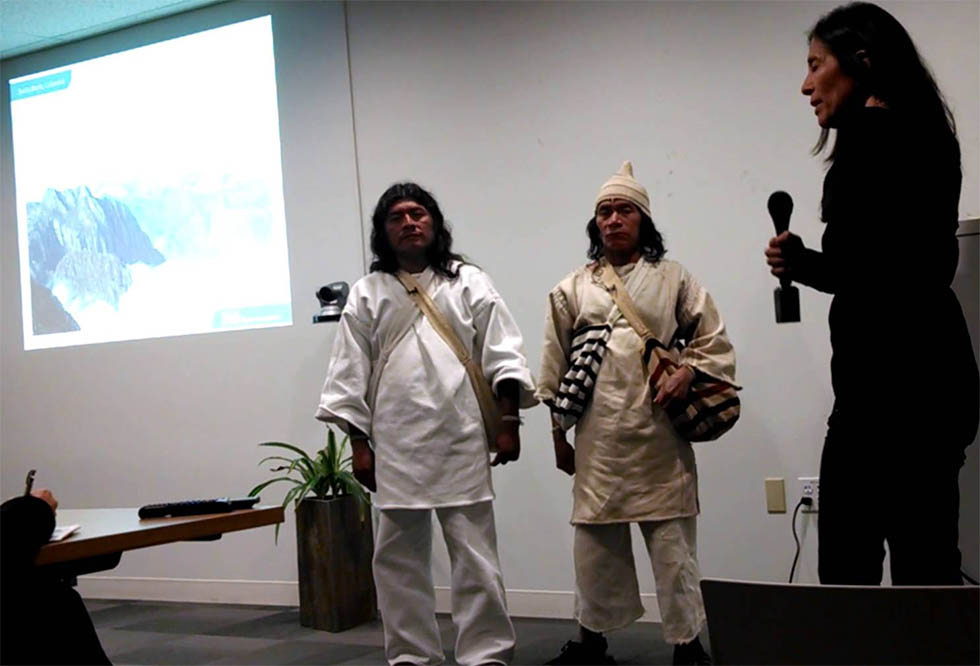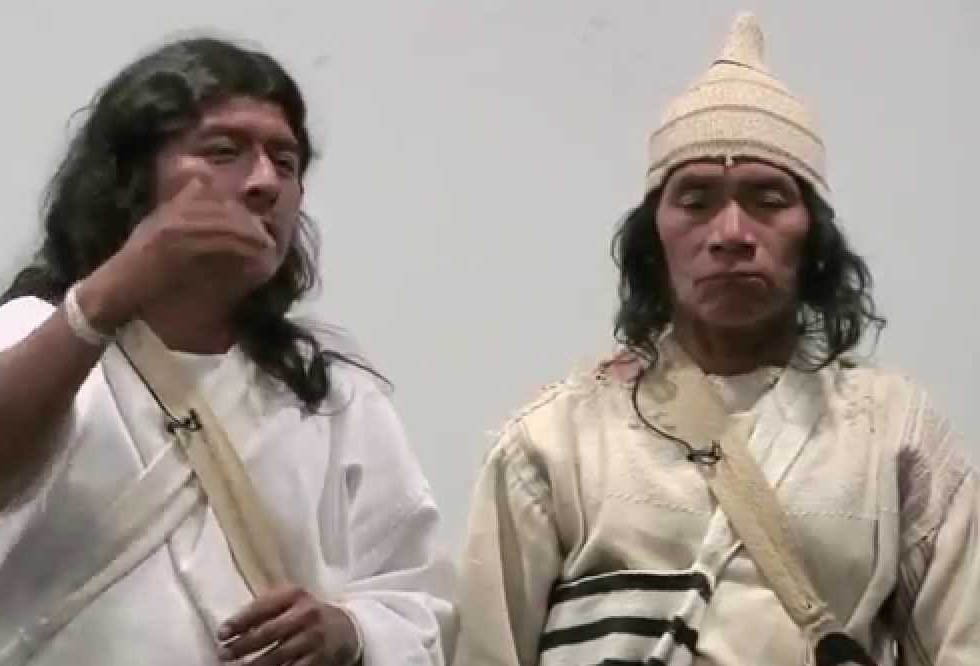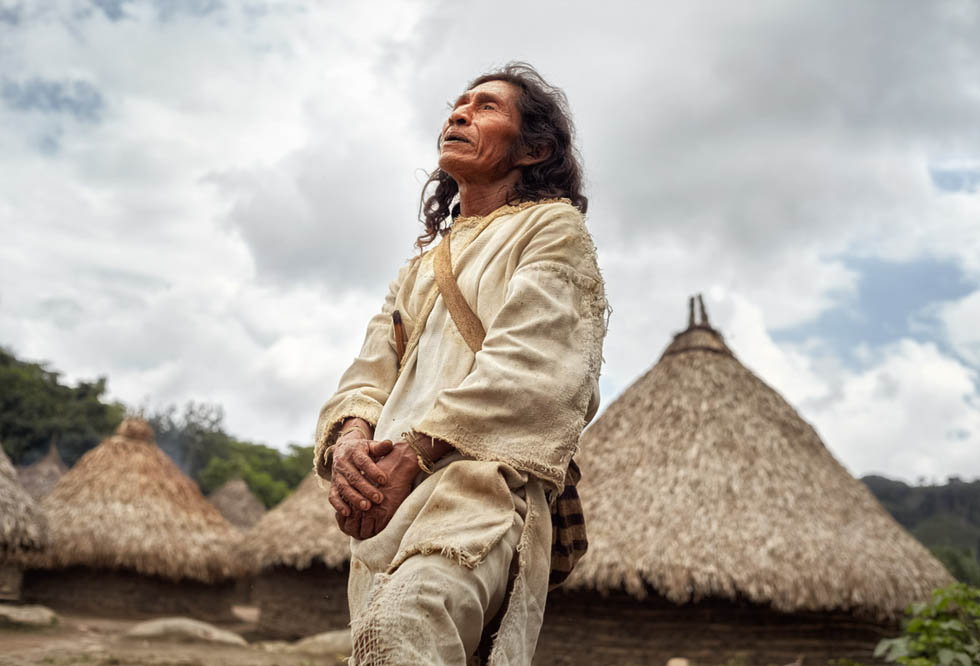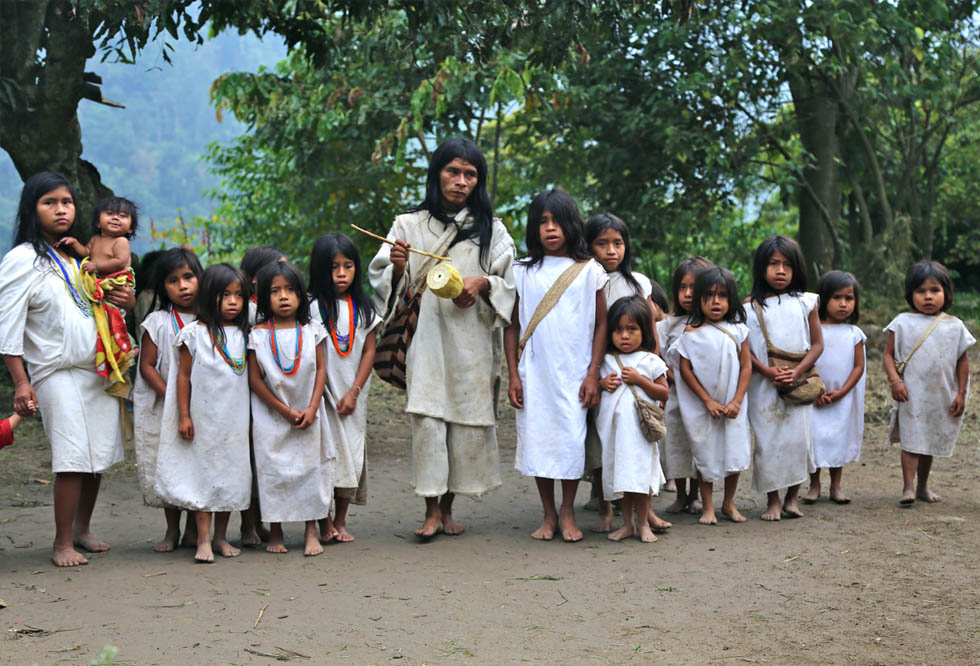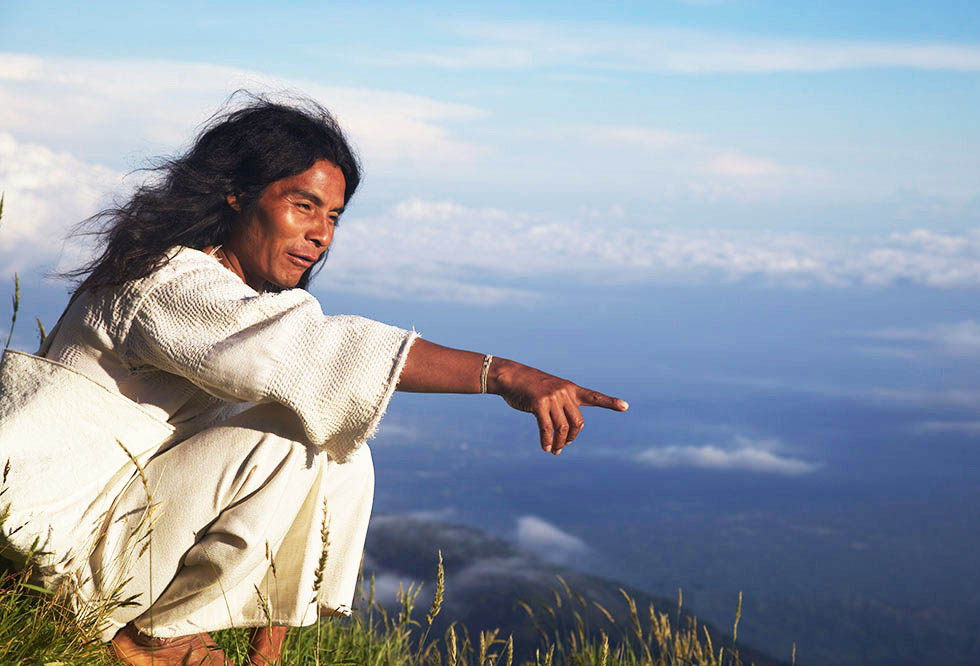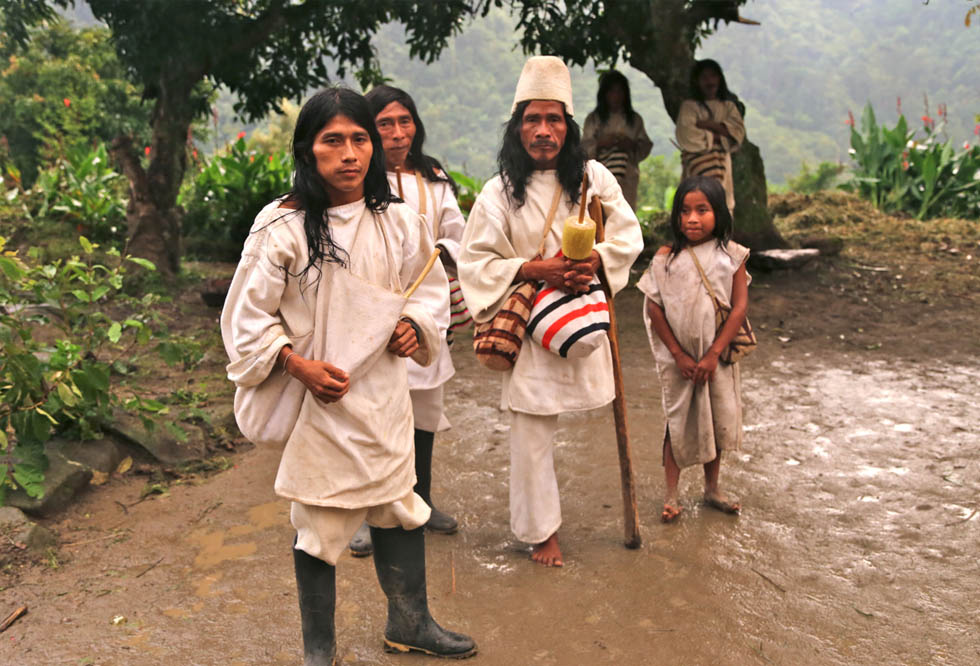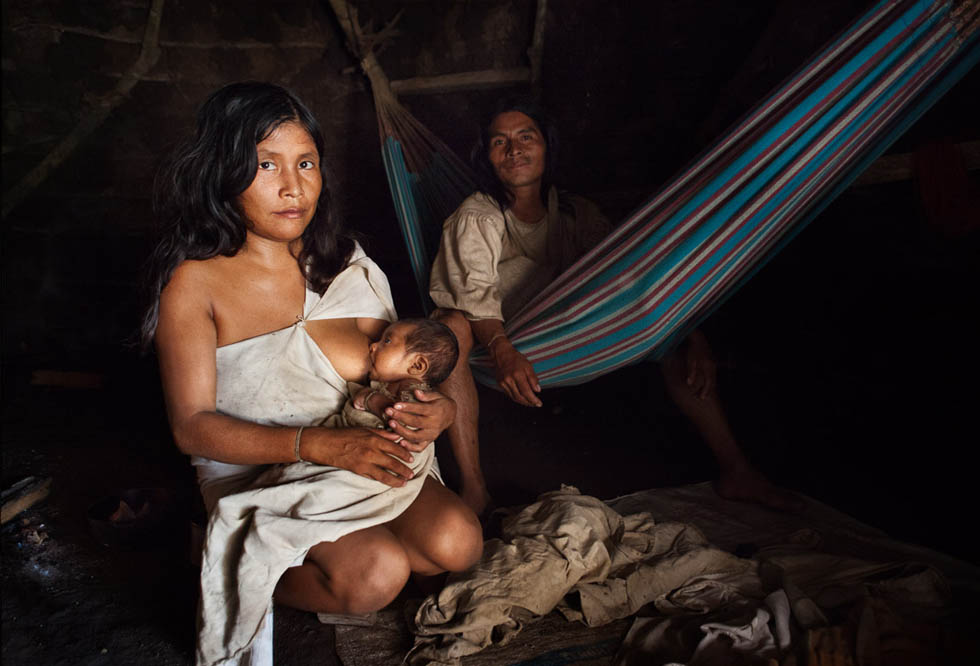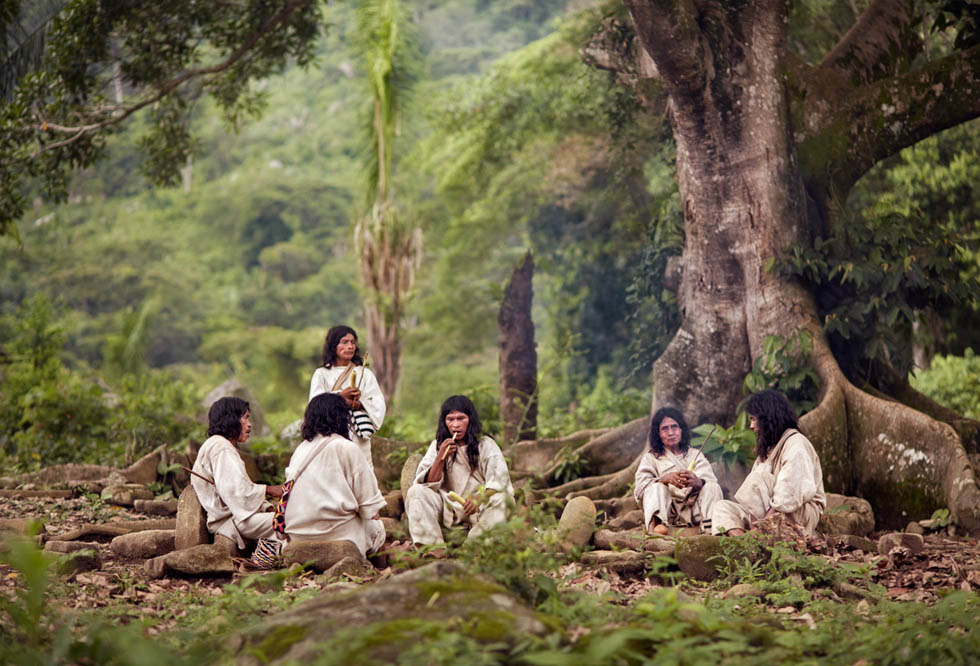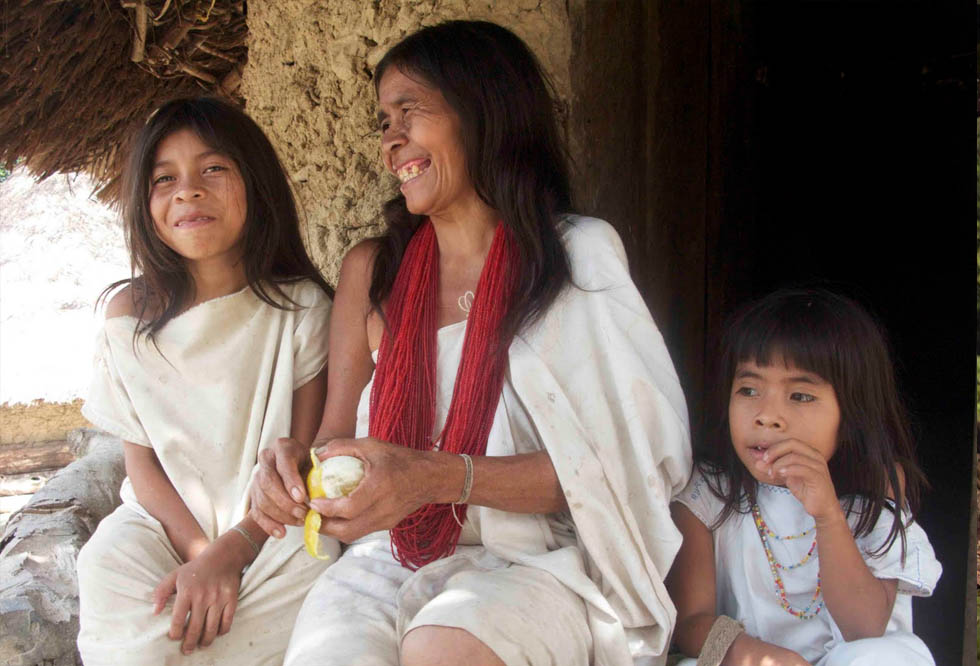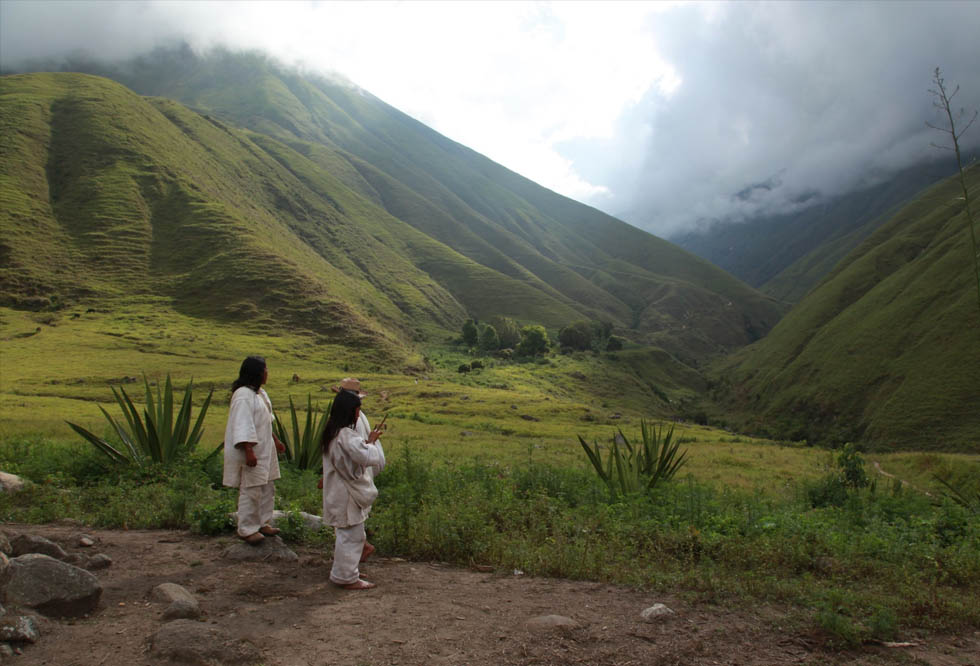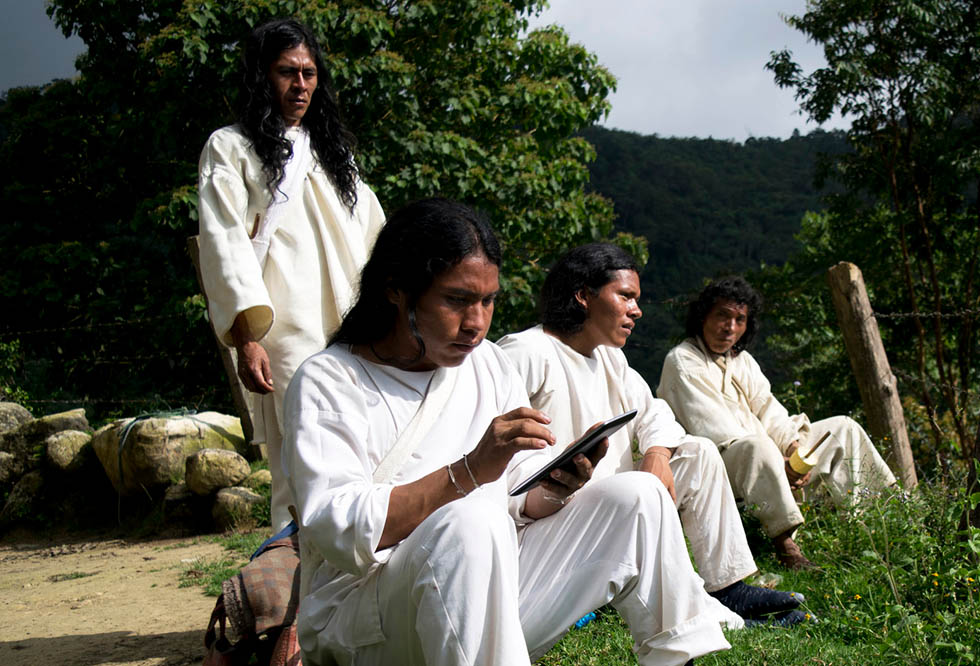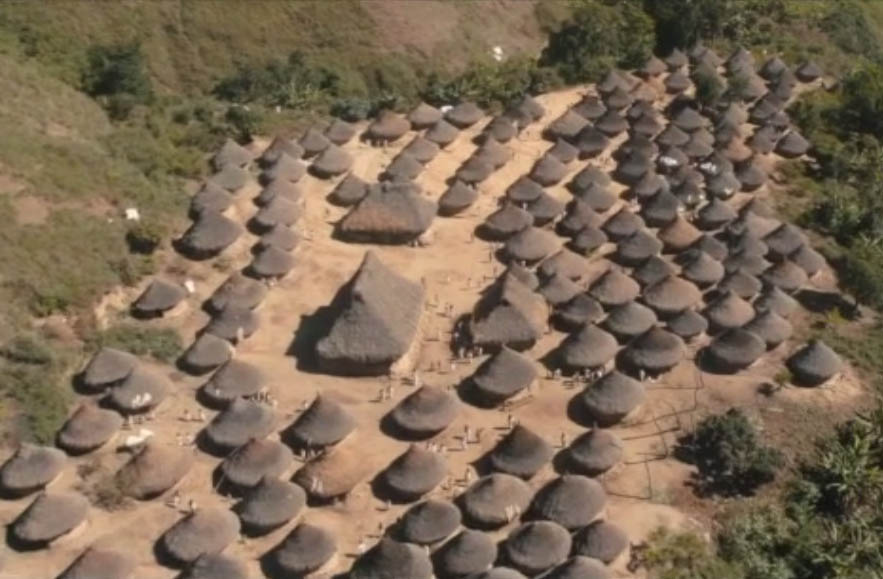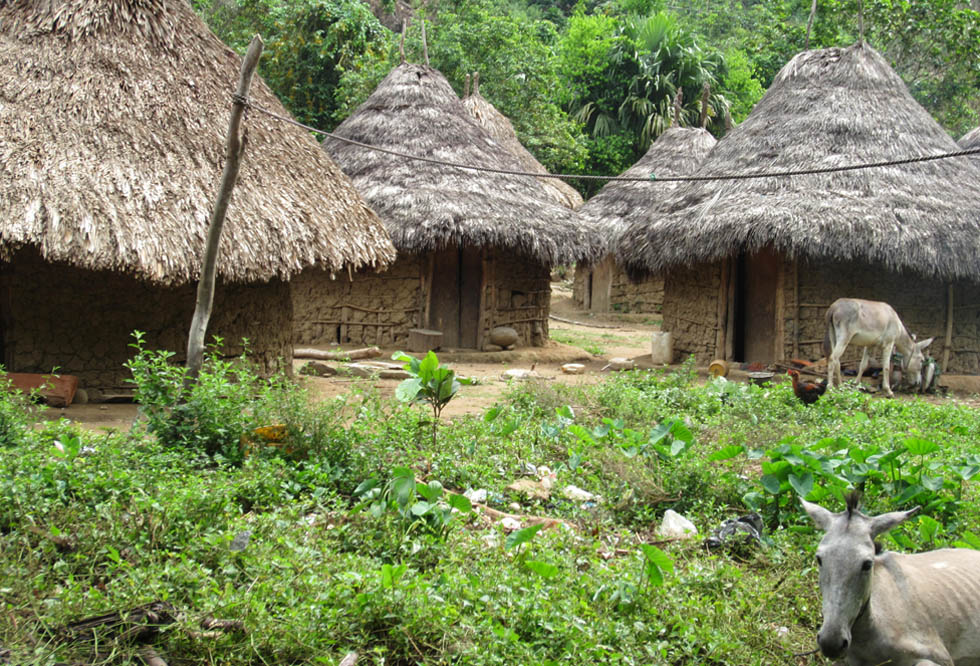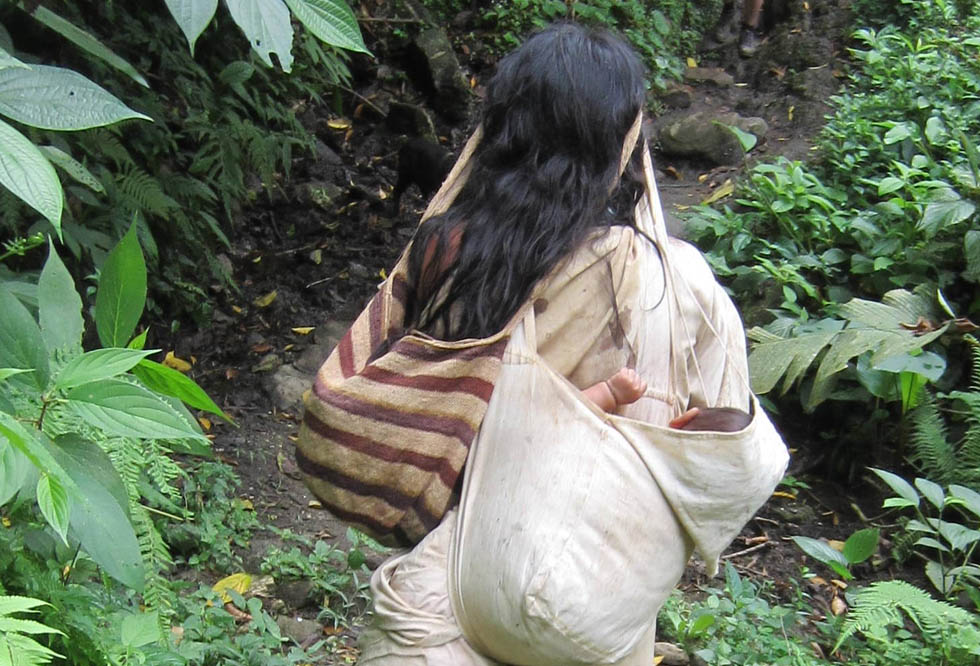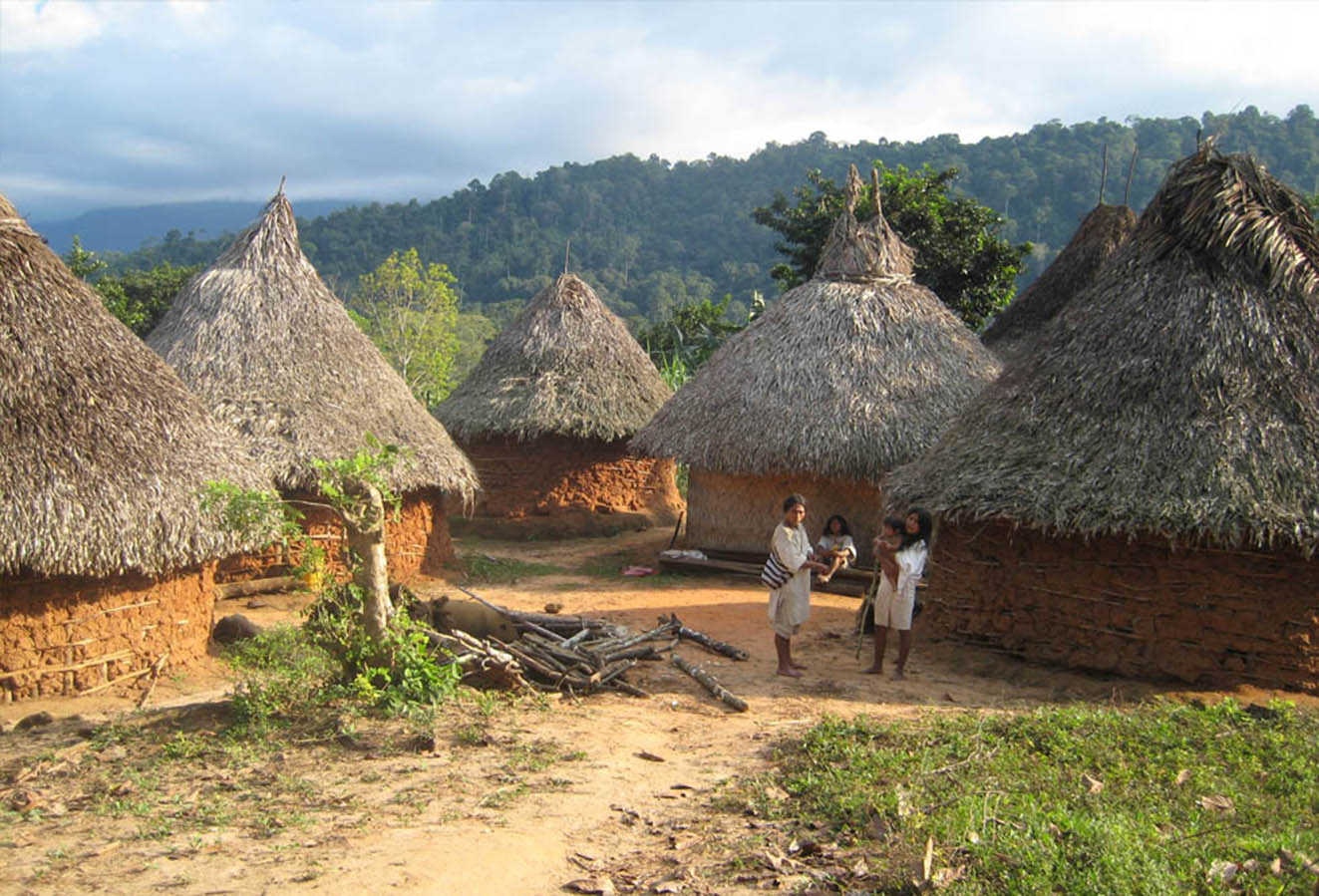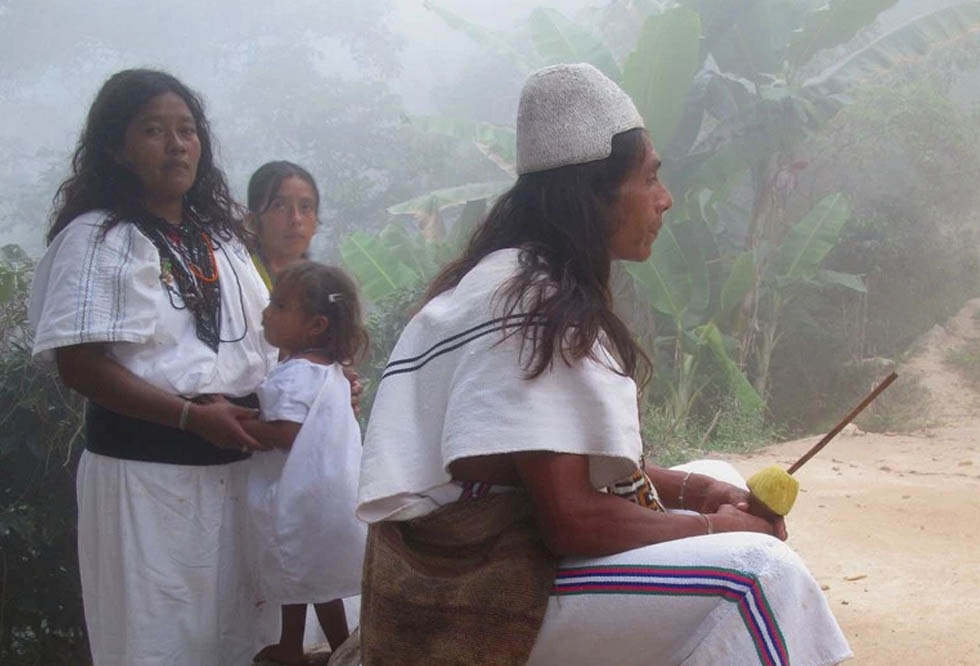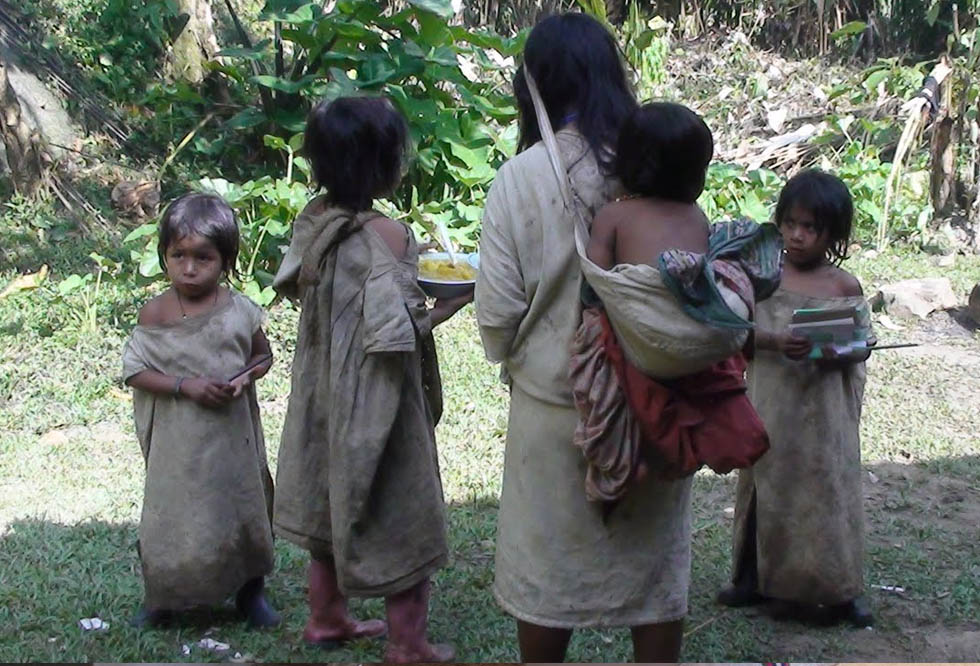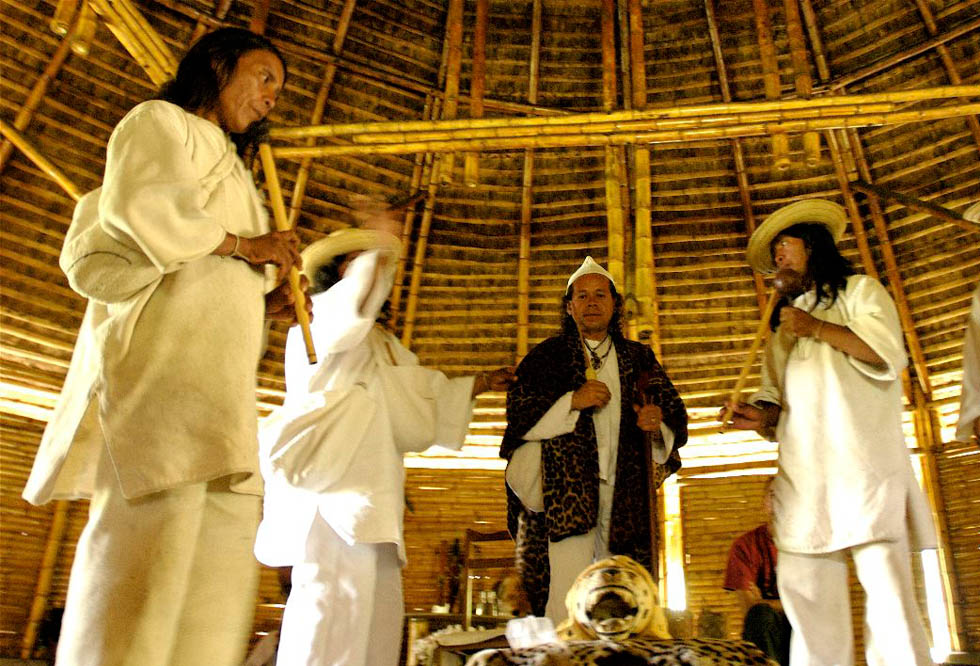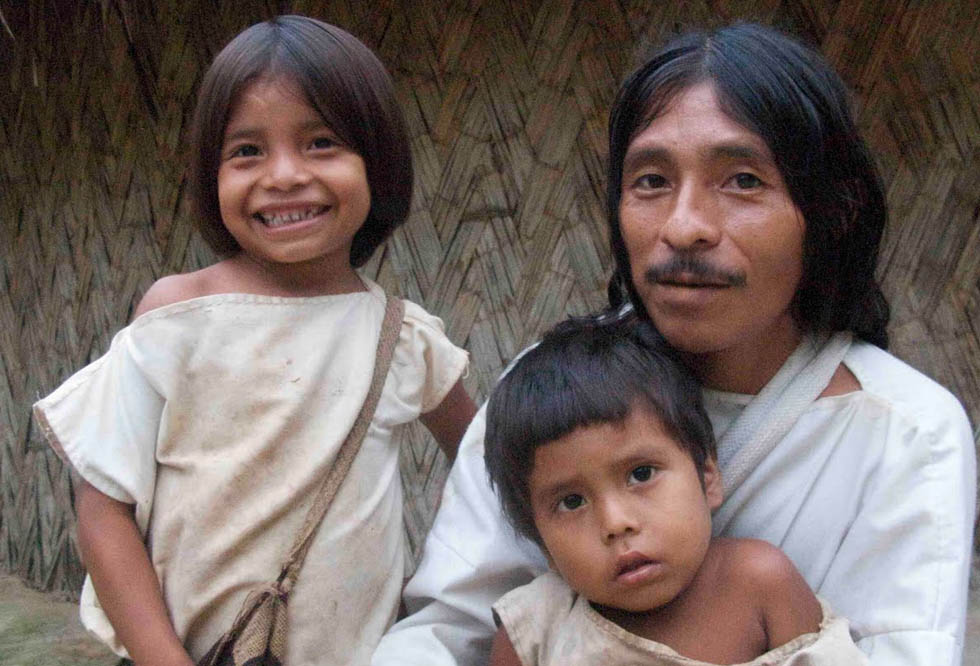
SATURDAY, MAY 21, 2016: NOTE TO FILE

The Other Kogi
A Tairona-like alternative future: 2030 to 2490
Eric Lee, A-SOCIATED PRESS
TOPICS: KOGI, TAIRONA, FROM THE WIRES, SUSTAINER CULTURE
Abstract: A possible history of the Tairona to suggest why they may be a people of interest, may allow us to consider a possible future. The Kogi have managed a complex society for 1,100 years sustainably. In another 1,100 years it will be 3116. Such humans as there may be could have learned from the Kogi, assuming we learn from them now while we still can.
TUCSON (A-P) — The story of the Kogi up to the present, some parts imagined as so little is known, has been told of. In 2011 the Kogi mámas gave Younger Brother a final warning. BBC made another film. Younger Brother didn't listen. Of the few that did, most merely hoped to divine secrets from those who surely are decendants of Atlantians, a sort of "what can the Old Age give to the New Age" to believe? But the mámas are not telling us what we consumers want to hear, so we are not buying. To be clear, if the Kogi are right, then over 7 billion other humans are wrong—fundamentally, horrifically, existentially wrong. All but a few literally cannot grasp that possibility, much less consider it. The Elder Brothers respect their mámas. Younger Brother has his own mámas who are used for the milk and cheese and profit they bring, but are not respected. In 1992 they gave Younger Brother a warning that was also ignored. They were not ones to keep doing the same thing over and over again while expecting different results, so annual warnings have not been offered. Those who still want to warn Younger Brother await a teachable moment. When the mámas can say, "We told you so," their message will seem more credible. When the Tairona refugees abandoned their coastal towns to seek higher ground, to avoid genocide, they were teachable and the Kogi mámas were prepared to instruct them. By 2020 some Younger Brother Mámas, those few who strive to be ecolate (most Younger Brother scientists are not trained in systems science), had seriously considered the Elder Brother Mámas' message. There was enough information in print and on video that they did not need to actually work with the Kogi mámas, but contact was made to convey the message that information packages were being prepared for restart after crash. The central take home message was the same as the Elder Brothers' message and their example was humanity's best hope. The pace of planetary destruction had not slowed. Younger Brother would learn the hard way, if at all, per máma teaching. The Euro-Sino Mámas did not bother much with warnings in the 21st century. Turning things around before descent (degrowth) would not be possible as the turning point had been passed. Alternative was to prepare information packages while there was still time and leisure to think it through. The Kogi mámas were told that it was their insights and innovations that had inspired the Younger Brother Mámas to have hope and take action. If the message of Ecolate mámas could be transmitted to those who would attempt to rebuild, they would be able to rebuild without repeating the mistakes of Younger Brother if they learned instead from Elder Brother. The Kogi mámas should know that they will live on, that their memes survived them. Their work of guarding the world continued. The Federation mámas would rebuild. After just a thousand years of nature restorancy, the Heart of the World would begin to beat again, thanks to the Kogi mámas who did their work right and well. Here is how it came to pass. The Federation mámas had been able to avoid learning the hard way as they learned from the Kogi mámas who had learned the hard way. They put themselves—their minds, at the Heart of the World, considered the Kogi way, the Hopi way, and that of other First Peoples who had learned (the hard way but still remembered) that they are the environment and must care for Mother. This realization was their organizing principle, both for their thoughts and actions, for the transitional form of civilization that was thereby enabled. They could have guessed wildly, out of desperation, as to what might work, but the Kogi mámas had made their transitional understanding happen, had made it so while preserving their high learning, and the Federation mámas were humbled. They internalized the teachings of the Kogi mámas and built upon their learning, combining it with their own. Without knowing that the needed transition was actually possible, as evidenced by the Kogi alone having done it, the Federation mámas may have given up or failed to know what information was important to pass on. The Fed mámas developed an ideographic language and a Rosetta book anyone, no matter what spoken language they may have learned as children, could use to teach themselves Bliss (the written language's name). Many copies of the Rosetta Book00 had been printed on durable material and spread about the globe—every library, motel room, and many people's book shelves had a copy. Few made use of it, but those who did, often as children, were self-selecting themselves to become mámas. The Fed mámas did not select toddlers for training, though that may have been best, but alternatives that achieved a similar result had to be considered. Mámas go with what works; they guess then test. The Rosetta book invited anyone who would rather know than believe to learn. No teachers or school systems needed, and so neither were being depended on. There were barely enough Fed mámas in the 21st century to write the "Encyclopedia Bliss" let alone teach the world to think like mámas. Who was there to teach the teachers? Only Bliss, teaching higher literacy, numeracy, and ecolacy, could be offered to Younger Brother. To know Bliss was to become an Elder Brother. Before the end of the 21st century, Rosetta Bliss was common and every village had a copy of Encyclopedia Bliss. The number of mámas grew. Those who had read with understanding the Encyclopedia Bliss, could easily be tested, and those with the most "promise and memory" (the Aluna ones) were invited to attend the Federation Academy for eighteen years of intensive training. They learned how to think, not what to think. Graduates went forth to help restore the planetary commons and help the commoners to live right and well within their environment and society with such power as was sustainably available to them. The planetary and regional carrying capacity, that had been severely degraded during descent, was assessed using best guess methods. There had been descent but more descent was needed to reduce the human footprint to leave room for Nature, to create enough reserves for the 100-year bad-year, and the 1,000 year bad-decade. The Federation decreed that each newborn must with a birth certificate come into this world. All humans who had not had children were given a birth certificate that was transferable. Each woman could have one child. Each couple has two children. On the death of a child, their birth certificate returned to the giver or returned to the Federation who issued birth certificates. To reduce population as their cold equations demanded, the Federation offered to "buy" birth certificates from those who did not want children. More certificates were thereby returned to the Federation than was needed. The Federation gifted extra birth certificates to minority populations who were underrepresented in the gene pool. Indigenes were high on the list, and perhaps with deliberate bias, the remnant Kogi survivors were gifted with birth certificates seemingly without limit other than as they imposed on themselves as usual. The Fed mámas endeavored to be fair, but they had their limits as mere humans and felt compelled to favor the Kogi whose culture spread beyond even their Pre-Columbian range, peacefully of course, as they revitalized degraded abandoned areas. The Fed mámas and Fed-scholars valued technology. In the early years they had been called techno-scholars. But they valued only appropriate technology that was needed, rather than merely wanted. Metal pots were valued. Shoes in some regions were too, but not needed in many watersheds most of the time. Solar cookers reduced the need to otherwise burn biomass sustainably. What could be made locally reduced inter-watershed transport. The Federation motto was "Enough is enough," as it was antithetical to the Growther message of "MORE! Want MORE! Enough is never enough!" Among the high-tech that Younger Brother had valued, birth control technology was valued most. To have a child was no longer a matter of having vaginal intercourse or not. Reshaping human sexual behavior had been perhaps the greatest challenge the Kogi mámas had had to deal with. They did what worked, but with birth control technology, having a child was a matter of deciding to stop using it. With birth control technology, Fed mámas could teach about and provide the technology without being gravely concerned with sexual behavior. Individuals who intentionally attempted to have children without the mámas' blessing had to be dealt with in the Kogi manner, but within a few generations this problem had become a non-issue as commoners could and did "think about it" and learn. Birth control became a fundamental human right. Those who demanded their right to breed if they wanted to could go to one of the remnant horde areas to live with them. The only other high-tech highly valued by the Fed mámas that was unknown to and would have been disapproved of by the Kogi mámas, was Federation smartbooks. They were descendants of the early "smart" phones which were misnamed. Every Fed máma could have a smartbook to carry in one of their underarm bags. They were low power devices, easily maintained by small solar chargers the Fed mámas had on their hats. Some commoners who needed and merited one also had a smartbook. The smartbooks were connected to the local intranet whose library server could provide information stored locally or request information via the inter-watershed global Info-ether library. The Techno-mámas had worked hard to preserve information technology and information. They developed Gog, the AI of whom questions could be asked and information provided. The Fed mámas checked and double checked the information and answers the Gog freely provided to all, commoners (via village terminals) and mámas alike, and all mámas were delighted and honored when they could correct the Gog. Gog was open source and open to being corrected. The Kogi were semi-nomadic with houses that provided enough shelter. Their personal possessions fit in two shoulder bags and included the clothes they wore except when drying after being washed. The Fed mámas had learned and taught the remnant peoples of the Euro-Sino Empire to know their needs from their wants. By reducing personal consumption to what was actually needed, by minimizing per capita consumption of planetary resources and living within the available sustainable energy (mostly solar), the die-off had been minimized. Of those who had accepted Federation limits and assistance, none had ended up eating each other. Those who could "think about it, think it through" as the Fed mámas often said, had willingly joined the Federation of Watersheds. As the first few centuries passed, the Fed mámas helped humanity to know great prosperity compared to what it had been during an unmanaged transition (as it did outside Federation managed regions). As the human population and footprint was reduced, not by die-off but by natural attrition and birth-pon management within the Federation, individual wealth was able to increase. When a child became a toddler, it's parents provided it with a rolling room that was attached to their rolling rooms. When couples married, they joined their rolling rooms. The blessings of a Fed máma were not required to cohabit (without procreating), though most who were wise would consult a máma. The rooms were designed and made to last a lifetime. They could be and were remodeled inside to suit individual preferences as they changed over a lifetime, but the Fed mámas had determined the space requirements for a human and it had turned out to be about what the Kogi and other First People had found to be needed while erring to the excess except in rolling room transport configuration with wheels added. The Fed Rooms were 2.5 m by 3 m and 2.5 m high outside dimensions, or about 4.8 meters square (52 sq. ft.) inside floor space depending on thickness of walls and insulation used. When two rooms adjoined, each person had 7 meters square (78 sq. ft.) each that was shared. Only the outside dimensions were determined. These people were so wealthy that all rooms had solar panels on the roof for PV and hot water heating, and all could be adjoined and could roll. It had taken less than 500 years for Federation citizens to transition. No common, non-disabled human needed more space and so none, no matter how high their social status, were provided with more space. All rooms could have wheels and extra solar panels attached to slowly (walking speed or less) move it from one watershed to another. At ports they could roll onto a barge and slowly sail the watery world. Freedom to travel, to live in any watershed that would have you as a member, was a human right per the Constitution of the United Federation of Watersheds. When children grew up, they detached their rolling room from their parent's and moved on. Couples could divorce by doing likewise. Individuals could go back if parents agreed and couples often lived near if not attached to their parents' rooms to benefit from freely given grandparenting services. All rolling rooms were elevated enough to allow plants to grow under them or livestock to take shelter. The Kogi had no more stuff than their two bags could hold. Fed citizens had no more than their rolling room could hold, which was far, far more than the Kogi had or humans needed, but not even close to what the pre-Federation growthers had wanted and thought they needed. Thus was the Federation footprint limited. The Kogi families had up to five fields they maintained with homes at each. The Fed máma design was alternative. Both systems worked right and well in the máma way. The Fed mámas had drawn black lines around watersheds or sections of large watersheds such that a human on a human powered vehicle could travel from the border to the central area in one day assuming a roadway. The watersheds were logical and functional areas of optimum management size as distinct from political lines that had defined nation-states. Some watersheds were larger (those having less environmental wealth, few resources) and some were smaller (those with high energy resources) than the average which was about 100 km in radius. As had the Kogi mámas, the Federation made room for Nature, never using all available resources. They limited human useage to 20% of a watershed, leaving 80% for other life forms. The Federation determined the emdollar value of tradable resources to ensure fair trade between watersheds. The Federation Guardians (formerly known as army and navy) provided transport of goods between watersheds by land and sea. They were also prepared to mobilize and send Guardians to prevent a successful attack on any Federation member by the remnant non-Federation hordes. In just a few centuries, almost all had joined the United Federation of Watersheds. The Pax Máma was restored, this time on a planetary scale. There were too few Younger Brothers left to threaten the Federation. Only a Borg-like Brotherhood from without could threaten to destroy the Federation.
|
|

